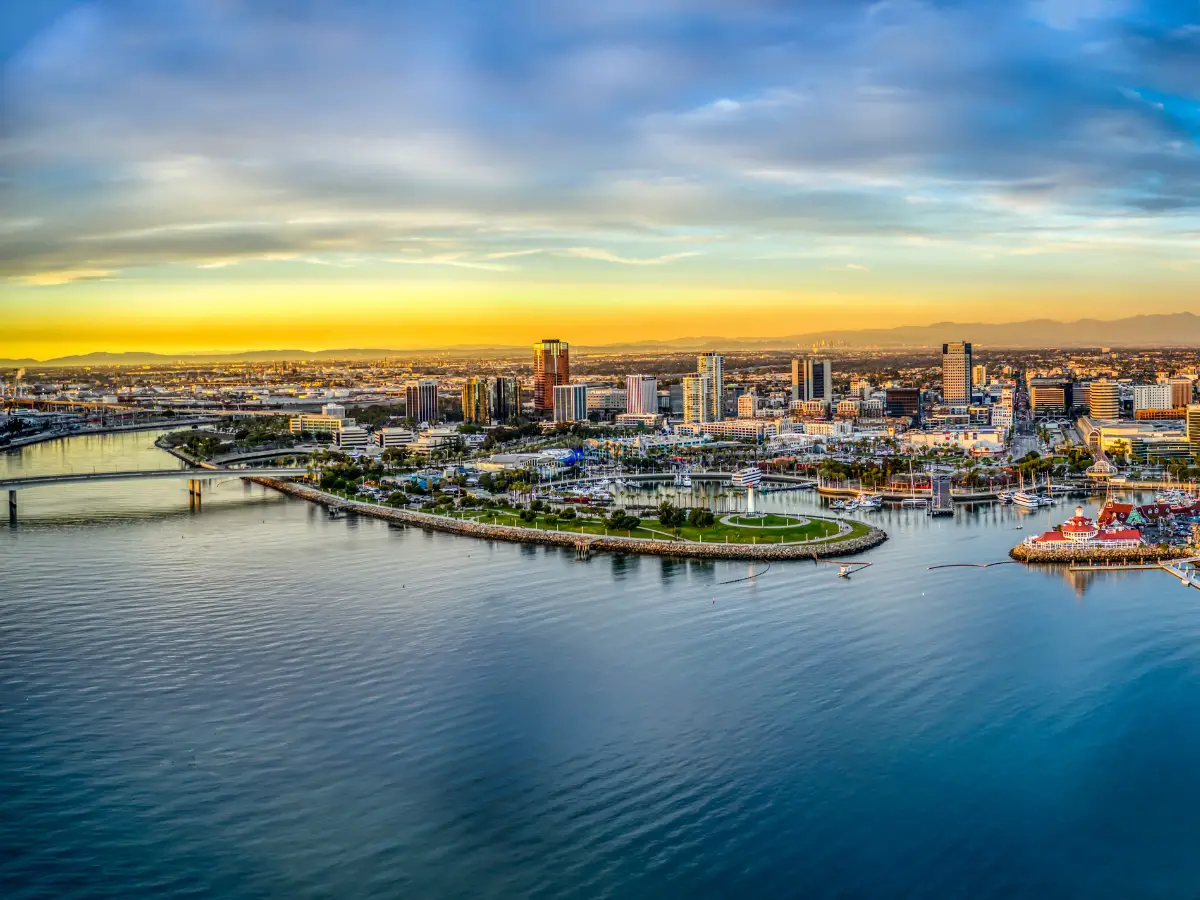Sun, sand, and surf are three of the main appeals of the California shoreline. Most water-goers understand that they’re not the only ones who enjoy the Pacific Ocean’s warm currents. Thirty-four shark species are known to occupy the waters off California’s Pacific Coast. Although shark attacks are rare, they happen, and Californians and tourists need to be aware.
This article looks at the presence of sharks along California’s coast and covers the history of attacks in the area. We also explore the statistics and investigate what areas pose the biggest threat to people.
After a deeper understanding of the Golden State’s marine life, we hope you won’t be deterred from enjoying some of California’s best beaches.
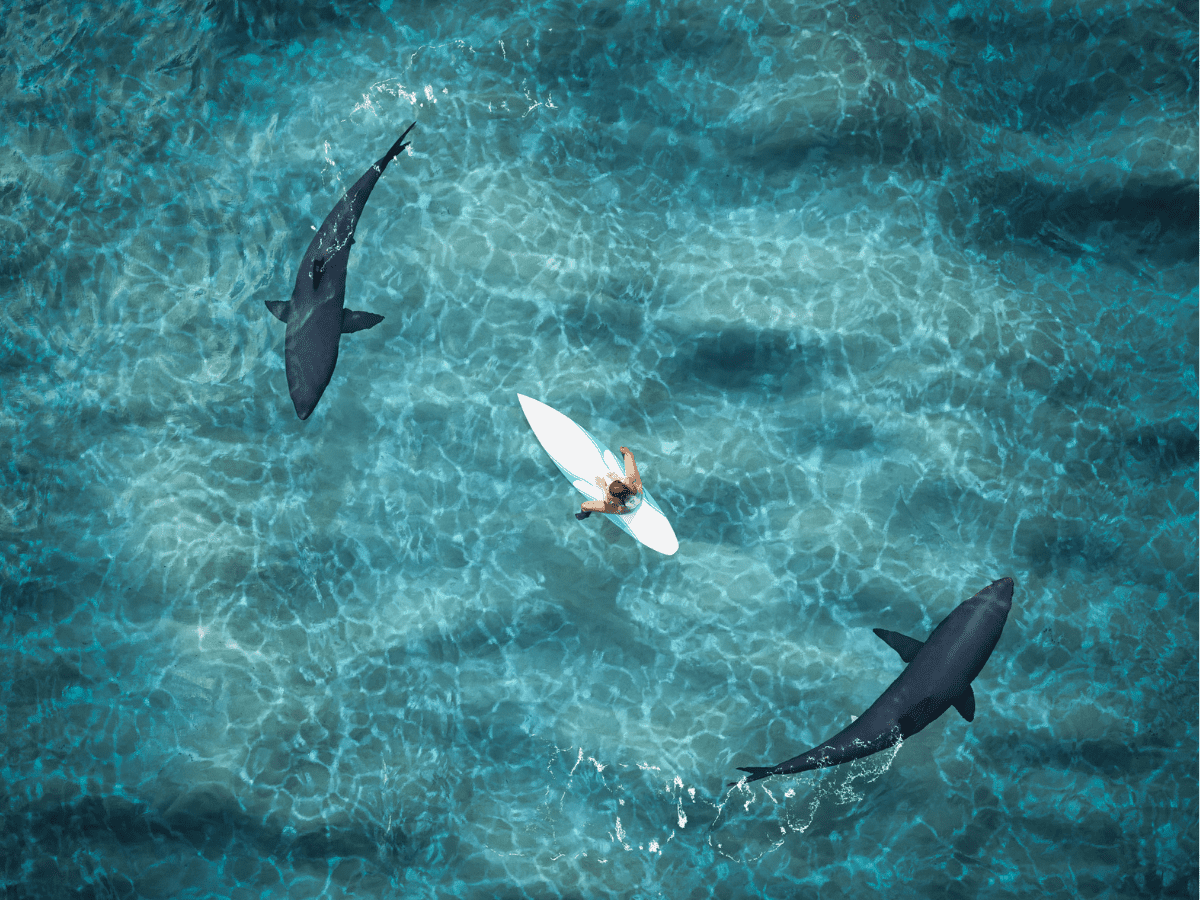
Most Common Sharks in California
California is home to a diverse variety of shark species. Some sharks spotted along the pacific coast include smooth hammerheads, megamouth sharks, leopard sharks, and broadnose sevengil sharks. However, regarding shark attacks or interactions with humans, your most likely encounter is with a Greate White, Tiger, or Bull shark.
California Shark Attacks History
The Great White shark has been an Apex predator in California waters for hundreds of millions of years. Although the Pacific Coast contains a rich and diverse marine life, the Great White is responsible for most attacks and interactions with humans. Almost 90% of all reported interactions with sharks off the coast of California involved a Great White.
Fortunately, white sharks don’t tend to target humans, so attacks are very rare. When fully grown, they spend most of their time 7,000 feet below sea level. However, juveniles often roam closer to the coast and account for most of the sightings in California.
While there have been hundreds of attacks throughout California’s history, marine scientists believe that most are cases of mistaken identity, where the shark thinks a person’s boat, kayak, or surfboard is a food source.
Why Do Sharks Attack?
The reasoning behind shark attacks on humans is thought to be multifaceted. It’s even more complex when you realize the enormous differences between shark species and their hunting habits. Moreover, shark attacks are so rare that collecting data on why they occur is quite difficult. However, since most shark interactions in California are with Great Whites, some interesting information is to consider.
Firstly, humans aren’t a predatory target for Great Whites. Migration patterns show Great Whites travel thousands of miles at different points during the year in search of warm water.
Adults often spend months in deep ocean waters searching for prey, with no human life in sight. They mainly seek large fish, seals, turtles, and other sharks.
When hunting marine life, Great Whites follow a distinct pattern. They use their exceptional vision to stalk prey and attack quickly from beneath, often breaching the surface.
With human attacks, many incidents occur without the person realizing it. Sharks nibble at the swimmer’s leg or gnaw at their surfboards.
Since sharks’ mouths also function as sensory organs, they bite into things to determine what they are. The evidence suggests that many unprovoked shark attacks in California occur due to curiosity or distraction.
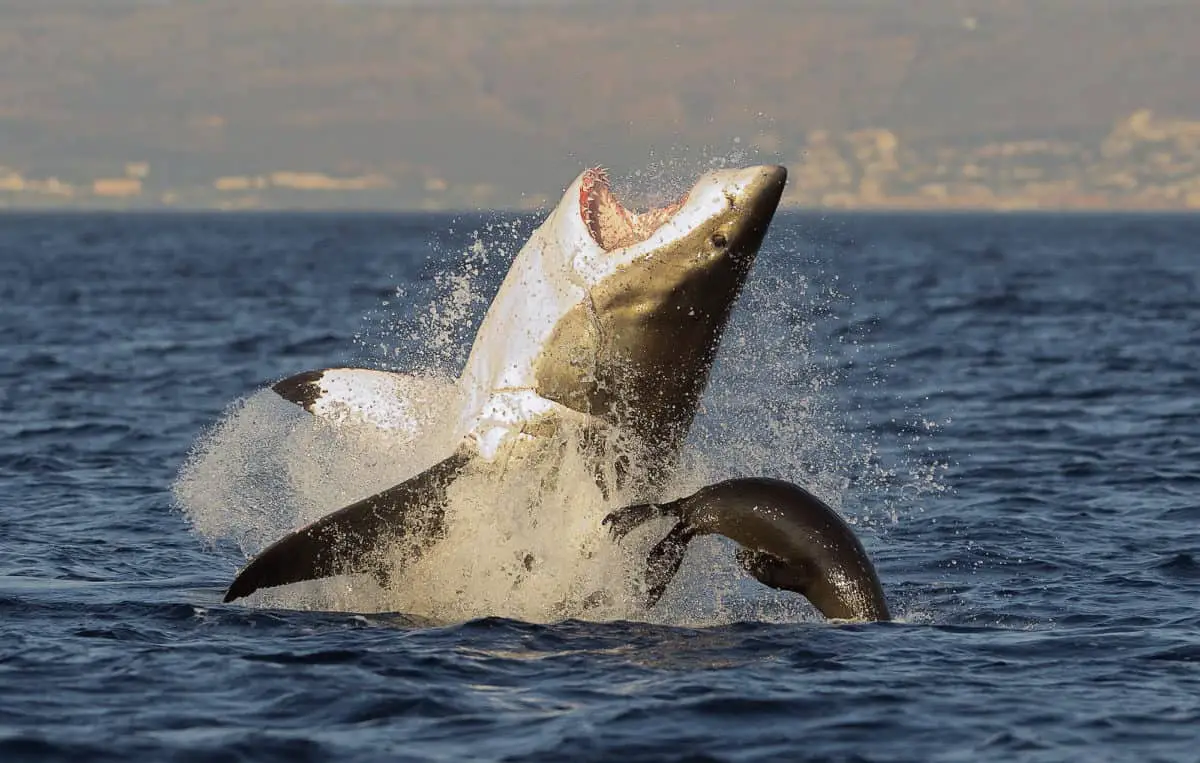
First Known Fatal Shark Attack in California
Since sharks have lived along the pacific coast for millions of years, there have likely been many undocumented attacks throughout history. However, the first known incident occurred in 1899. This was by no means a standard attack, and you must consider the victims’ roles in their deaths.
While fishing for basking sharks off the coast of Monterey Bay, California, five Japanese men were killed. Firstly, two men were pulled from the boat after harpooning the shark and were dragged along the water.
Two boats followed the men until the shark stopped moving. At this point, the shark lashed out and hit both boats, destroying the two men and destroying the boats. There was one survivor, leaving five dead.
The first documented attack along the coast happened in 1952 near Pacific Grove. Arthur Wilson, a 15 -year-old swimmer, was in 30-foot waters, just 25 yards from the shore, when he was bitten and thrashed by a 15-foot Great White (suspected).
Despite his friends being able to fight off the shark and free Wilson from its jaws, he died as a result of blood loss from at least four bites.
The last known shark attack fatality in California occurred in December 2021, when a 42 -year-old was killed while bodyboarding at Morro Bay. There have also been multiple attacks in 2022 at Monterey Bary and Pacific Grove.
California Shark Attacks Statistics
Despite millions of people sharing the ocean with sharks daily, attacks are extremely rare in California. There have only been 15 fatalities since 1950 out of 204 reported incidents.
Interestingly, at least 181 of these involved Great Whites. Although they are large and scary, Great Whites are unlikely to attack intentionally unless they deem you a threat or you invade their space.
The California Department of Fish and Wildlife regularly updates its shark-related incidents database. Incidents have steadily increased over the past 60 years.
However, this is mainly due to the growing population of California and the popularity of water-based activities, like surfing, scuba diving, and ocean swimming.
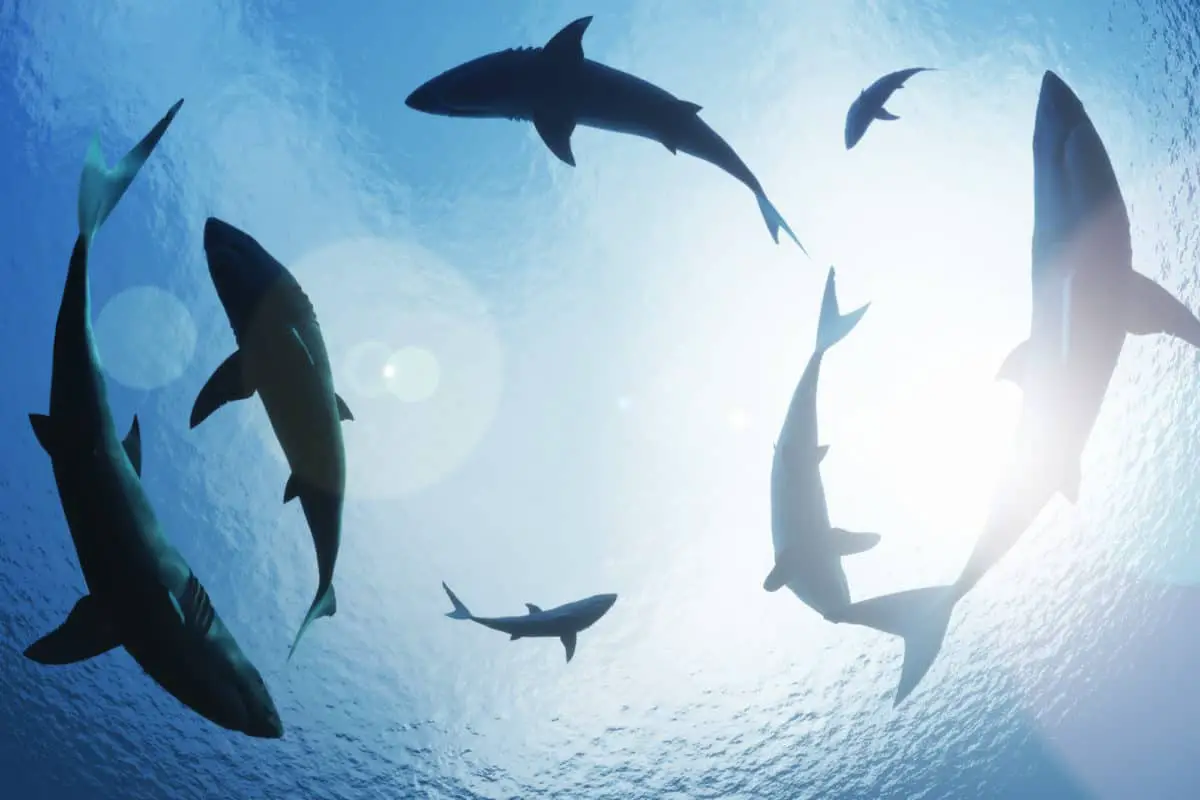
California Shark Attacks By Year
When you analyze the statistics, you quickly realize that the increased number of shark interactions hasn’t led to a proportional increase in the list of fatal shark attacks. The higher number of non-injury incidents shows that sharks haven’t become more aggressive or likely to attack.
According to the Department, incidents are defined as occurrences where sharks are reported to have approached and made contact with a person or their surfboard, kayak, or other types of flotation aids. The numbers don’t account for sightings, contact with boats, or accidentally hooked sharks.
| Decade | Non-Injury Incidents | Non-Fatal Injuries | Fatalities | Total Incidents |
| 1950s | 1 | 7 | 4 | 12 |
| 1960s | 1 | 9 | 0 | 10 |
| 1970s | 2 | 17 | 0 | 19 |
| 1980s | 3 | 14 | 3 | 20 |
| 1990s | 11 | 18 | 1 | 30 |
| 2000s | 20 | 17 | 3 | 40 |
| 2010s | 33 | 20 | 2 | 55 |
| 2020s (so far) | 9 | 7 | 2 | 18 |
| Total | 80 | 109 | 15 | 204 |
Red Triangle California Shark Attacks
The Red Triangle is a name given to an area in the pacific ocean where many shark attacks occur. Over one-third of all U.S.-based Great White shark attacks have occurred in this region. The Red Triangle covers around 200 miles of ocean, from Bodega Bay, toward the Farallon Islands, all the way to the Big Sur.
The climate and abundance of marine wildlife make this a perfect place for Great Whites to hunt and reproduce. Adults don’t congregate there year-round, however.
They are sparse during late spring and summer but begin to gather during August. Females tend to visit the Gulf of the Farallones once every two years as part of their mating schedule.
The Red Triangle encompasses several popular San Francisco Bay area beaches, like Bodega Bay and Ocean Beach. These heavily populated areas for swimmers, surfers, and divers create a risk.
However, it’s important to remember that shark attacks are rare despite the crowds.
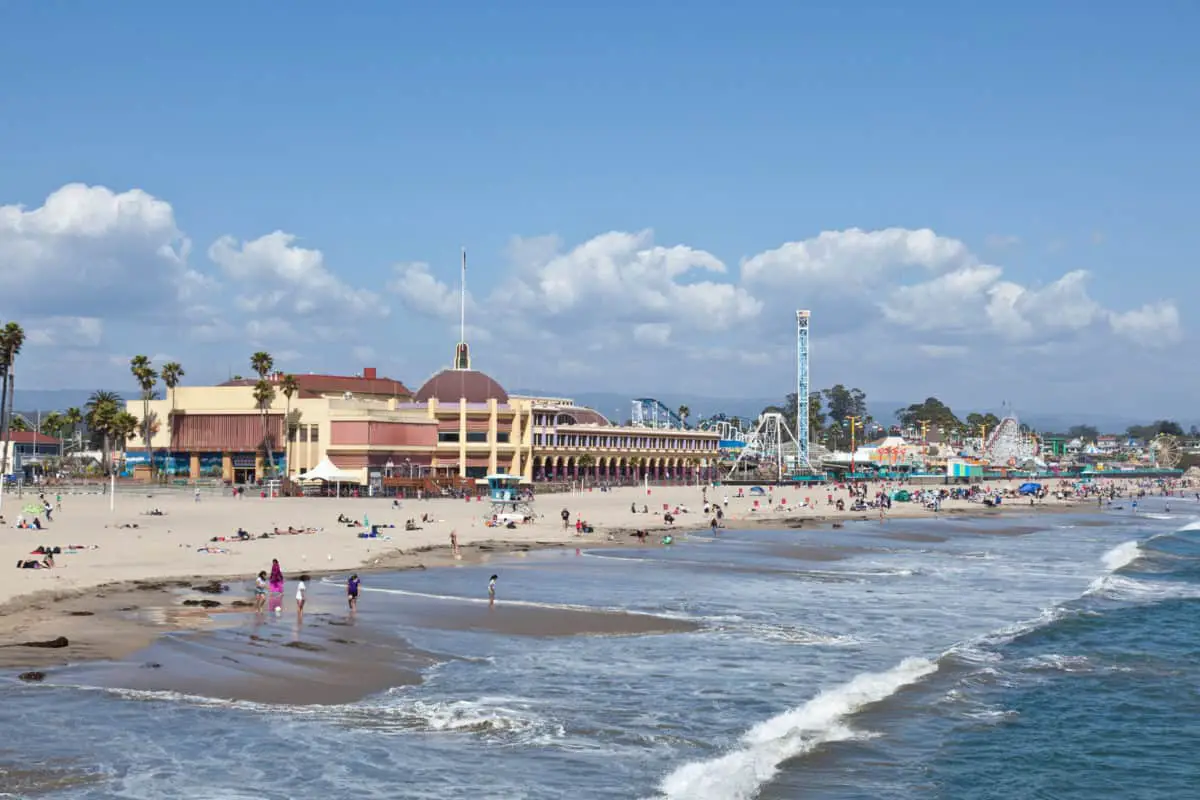
California Beach with Most Shark Attacks
Shark attacks and sightings have occurred near several California beaches. While incidents are sporadic, some areas are known to have Great Whites nearby. Here’s a look at some California beaches that have had known attacks over the past few decades.
Surf Beach California Shark Attacks
Talk with any Surf Beach regular, and you’ll quickly learn that there are Great Whites in the water, and sometimes there are quite a few of them. Since 2008, there have been four attacks, including two fatalities.
In October 2010, a 19-year-old bodyboarder was pulled from his bodyboard and killed approximately 100 yards from the Surf Beach shore in Santa Barbara. The Great White responsible for his death was believed to be 18 feet long, weighing around 4,000 pounds.
Two years later, in October 2012, a 39-year-old surfer was bitten by a Great White off the Surf Beach shore. Although the shark wasn’t identified at the scene, authorities could confirm it was a Great White after examining the fatal wounds.
Huntington Beach California Shark Attacks
There have been a lot of shark sightings at Huntington Beach in recent years, including reports of multiple Great Whites. Among these sightings, there were two attacks, neither of which were fatal.
Reports also indicate that sharks bumped swimmers and surfers in the water but weren’t bitten or attacked.
Oceanside California Shark Attacks
Shark sightings are rare at Oceanside in San Diego County. However, Great Whites are known to pass by throughout the year. There have been no reported attacks but water-goers are encouraged to keep an eye on sighting reports before they swim or surf.
Seal Beach California Shark Attacks
Since most people are aware that seals are one of the main food sources for Great Whites, the name “Seal Beach” often triggers Galeophobia (fear of sharks). Although many seals and occasionally sharks occupy the surrounding waters, sightings are uncommon.
There have been no reported attacks at Seal Beach. This may be due to the area’s strict beach policies and shark monitoring.
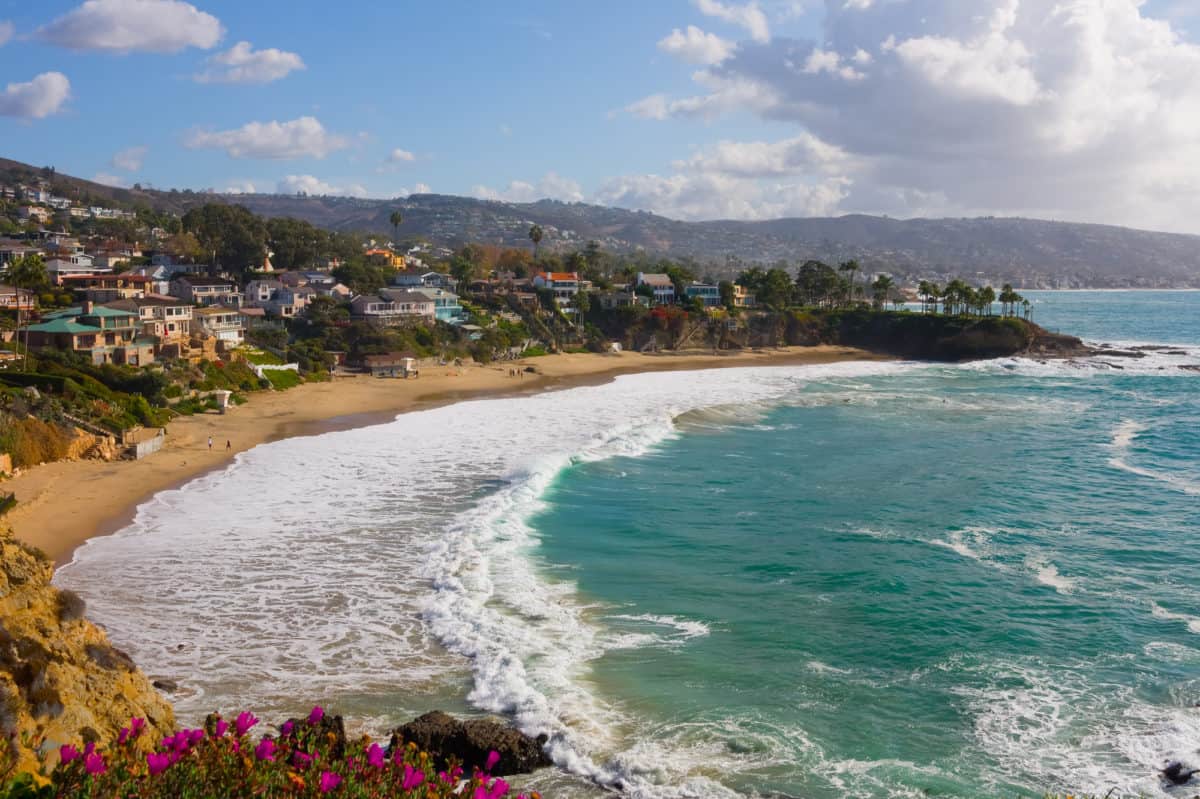
California Sharks FAQs
What beach has the most shark attacks in California?
Most shark attacks in California occur in the “Red Triangle”, which is an area off the west coast spanning from Bodega Bay to Point Sur. It includes several beaches, including the popular Huntington Beach and Surf Beach.
Are shark attacks common in California?
Shark attacks are extremely uncommon in California with just 204 reported incidents reported over the past 72 years. These figures include only 15 fatalities and 80 interactions that didn’t result in an injury.
How many shark attacks does California have?
Since 1950, 124 shark attacks in California have resulted in injury or death. 15 of the attacks were fatal, while 109 were not.
Where are the most Great White sharks in California?
Great white sharks occupy the waters all along the California Coast. While fully grown whites tend to stay in the deep waters, juveniles often venture closer to shore. The areas infested with the most Great Whites in California include Bird Rock, the Farallon Islands, and Ano Nuevo Island.
Is it safe to swim in California?
It’s typically very safe to swim in California beaches. An estimated 56 million people swim in the state’s pacific waters every year so the chances of running into a shark are extremely low. However, staying informed on recent sightings is important to minimize your risk.
Resources:
- https://www.surfertoday.com/shark-map
- https://www.floridamuseum.ufl.edu/shark-attacks/maps/na/usa/california/
- https://a-z-animals.com/blog/great-white-sharks-in-california-where-they-live-and-how-often-they-are-spotted/
- https://wildlife.ca.gov/Conservation/Marine/White-Shark#542632338-how-do-you-tell-white-sharks-from-other-species-of-sharks


